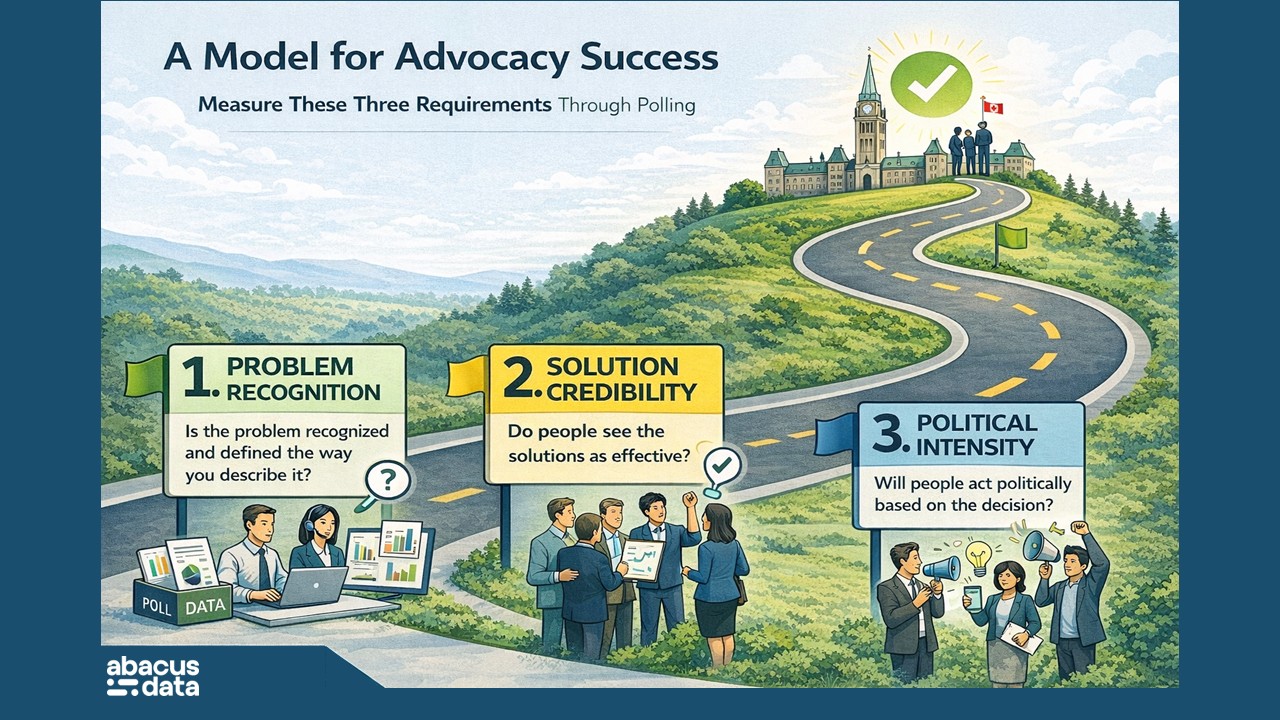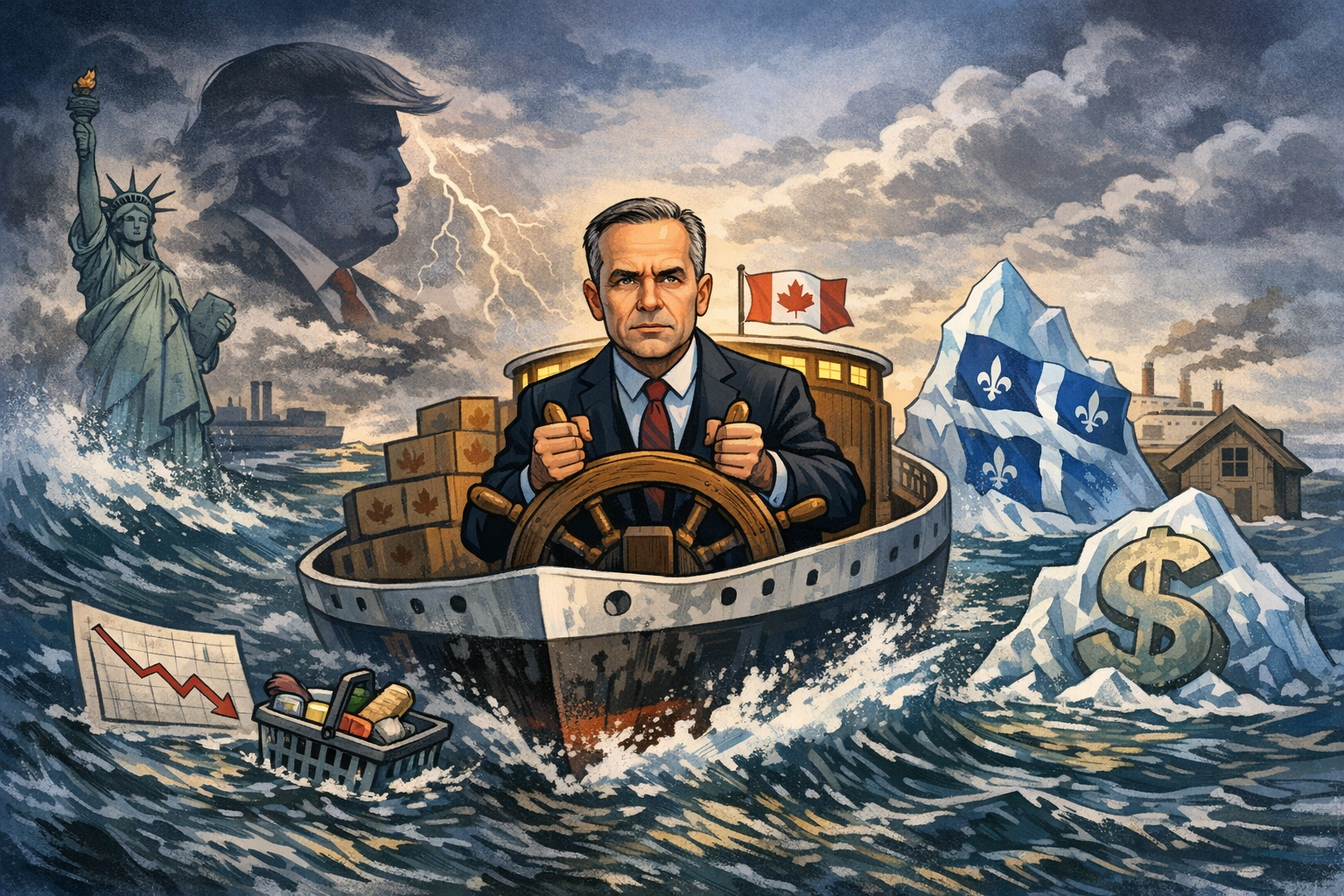Canada’s political mood tentative as spring arrives
March 19, 2021
Listen to David Coletto’s new podcast inFocus with David Coletto
We just completed a national survey of 2,000 Canadian adults (from March 12 to 17). Here’s what the survey found:
DIRECTION OF THE COUNTRY
By a narrow margin, more Canadians feel the country is going in the right direction (42%) rather than the wrong direction (38%). While that number is stable with our last wave, we continue to see the Biden election causing an uptick in feelings about the path the US is on.

These national numbers in Canada obscure some differences that are worth noting.
• Among those under 45, the plurality likes the way things are going. Over that age the reverse is true.
• Everywhere but in the Prairie provinces, solid pluralities are happy with the direction of things in Canada.
• Those with high school education are unhappy, those with more education see things more positively.
• Those who’ve already had a shot of Covid-19 vaccine are 55% right direction/32% wrong direction. Those who say they will never take a shot are 21% right direction/68% wrong direction.
Because of the unusual circumstances of a global pandemic, we began asking people who felt the country was going in the wrong direction if they felt that this was more due to governments in Canada making the wrong choices or because of factors beyond Canada’s control. What we find is that 73% of the “wrong direction” respondents blame Canadian governments, while 27% don’t.
Blending the questions together provides a clearer indication of how the “right direction/wrong track” question relates to political choice: 42% say right direction, 10% say wrong direction but not the fault of governments, and 28% say Canada is going in the wrong direction because of government choices.
CURRENT VOTING INTENTION
If an election were held now, the Liberals would win 33% of the vote, in line with their result in 2019, the Conservatives 29%, a loss of five points, the NDP 19% (up 3 points from 2019), the Green Party 8% (up 1.5 points) and the BQ at 27% in Quebec (down 5 points).

Regionally, we see a tight three-way race in BC, wide leads for the Conservatives in the Prairies, a 13-point lead for the Liberals in Ontario, a 7-point lead for the Liberals over the BQ in Quebec, and a 21-point lead for the Liberals in Atlantic Canada.

Among those who have already had a Covid-19 shot, the Liberals have a 15-point lead. Among those who want to take it as soon as possible, the Liberals lead by 14. Among those who say they will never take the shot, the Conservatives lead by 26-points.
LEADER IMPRESSIONS
Justin Trudeau enjoys a positive impression among 37% and finds negative impressions among 38%, for a net score of -1. His net score is -10 in BC, -32 in Alberta, +6 in Ontario, +4 in Quebec and +27 in Atlantic Canada.
Erin O’Toole enjoys a positive impression among 22% and finds negative impressions among 31%, for a net score of -9. His net score is -11 in BC, +5 in Alberta, -15 in Ontario, -10 in Quebec and -13 in Atlantic Canada.
Jagmeet Singh enjoys a positive impression among 34% and finds negative impressions among 24% for a net +10. His net score is +1 in BC, +7 in Alberta, +15 in Ontario, +5 in Quebec and +20 in Atlantic Canada.



DESIRE FOR CHANGE
A total of 38% say it’s definitely time for a change (39% last month), which is 14 points lower than the firm desire for change at the end of the 2019 campaign. Another 30% say “it would be good to have change but doesn’t matter to me that much”, up 3 points from last month and 13 points higher than at the end of the 2019 campaign.

17% definitely want to see the Liberals re-elected, and 15% prefer to see them re-elected but don’t feel strongly about it. What has changed is the intensity of desire for change, not the breadth of that desire.
Among those who definitely want change voting intentions do not coalesce around a single choice: 54% would vote Conservative, 25% NDP, 8% BQ, 7% Green, and 5% for the People’s Party of Canada. Seeing less intensity of desire for change is potentially a major challenge for the Conservatives if they are to improve upon their 2019 result.
Something that may cause pause for the Liberals is that among their 2019 voters, only 49% definitely want to see the party re-elected, and another 25% say they would prefer that outcome, but don’t feel strongly about it. That leaves about a quarter of the 2019 coalition leaning towards a desire for change.
UPSHOT
According to Bruce Anderson: “Canadians are mostly suspending engagement in partisan political choice right now, as they continue to grind through the pandemic and look towards a better future. While the balance of data suggests the Liberals could win another mandate if an election were held now, possibly a larger one if the split in Quebec is as we see it in this wave, there is also a bit of softness in the numbers for the government. The NDP and its leader Jagmeet Singh are finding space for progressive conversation, especially among younger voters, something that will no doubt attract attention from the Liberals as they map an electoral strategy.
The Conservatives on the other hand are struggling, at risk of losing touch with too many centrist voters in central and eastern Canada, and also watching some of their base shift to populist conservative alternatives. Mr. O’Toole will likely know that he needs to shake up his approach if he wants to gain traction, increase the intensity of desire for change, and make the case that the Conservatives are the best alternative.
Right now, Conservatives are at risk of being the 4th choice among voters under 30 – a prospect that should be of real concern. The party cannot keep battling internally on issues like abortion, transgender rights, whether and how to act on climate change, and at the same time have little or nothing to say about housing affordability, the gig economy and attracting next generation economic investment and expect to resonate with younger voters.”
According to David Coletto: “Not much has changed from our late survey suggesting we may be in a period where political views remain steady, especially as the risk of a third COVID wave increases and the public focuses on the implications of that.
A few things stand out to me in these numbers.
First is the increase in vote share for the NDP and Greens. Back in November, 21% of decided voters said they would vote either NDP (15%) or Green (5%). Today, it is 27% (NDP 19%, Green 8%). The Liberals should be concerned about this as a weaker Conservative Party has not translated into a higher Liberal vote share. The Greens and NDP are finding wide support among younger Canadians (48% would vote either NDP or Green), a demographic critical to a future Liberal majority.
Second, the Conservatives can’t count on an enthusiastic base like in 2019. Given that the Conservative vote share has slowly dropped over the past few months, from 32% to 29%, the party will need an energized base to make up for its weakness in the broader electorate. The problem with that strategy requires people to really dislike the incumbents. We see far fewer people who are angry at Mr. Trudeau and far fewer who are strongly motivated to want to kick out the Liberals.”
And don’t miss any of our research and analysis, plus get our weekly Worth A Look newsletter. Sign up today.
ABOUT ABACUS DATA
We are the only research and strategy firm that helps organizations respond to the disruptive risks and opportunities in a world where demographics and technology are changing more quickly than ever.
Find out more about what we are doing to help clients respond to the COVID-19 pandemic.
We are an innovative, fast-growing public opinion and marketing research consultancy. We use the latest technology, sound science, and deep experience to generate top-flight research-based advice to our clients. We offer global research capacity with a strong focus on customer service, attention to detail and exceptional value.
We were one of the most accurate pollsters conducting research during the 2019 Canadian Election.

Contact us with any questions.
Find out more about how we can help your organization by downloading our corporate profile and service offering.
METHODOLOGY
The survey was conducted with 2,000 Canadian adults from March 12 to 17, 2021. A random sample of panelists were invited to complete the survey from a set of partner panels based on the Lucid exchange platform. These partners are typically double opt-in survey panels, blended to manage out potential skews in the data from a single source.
The margin of error for a comparable probability-based random sample of the same size is +/- 2.1%, 19 times out of 20.
The data were weighted according to census data to ensure that the sample matched Canada’s population according to age, gender, educational attainment, and region. Totals may not add up to 100 due to rounding.





